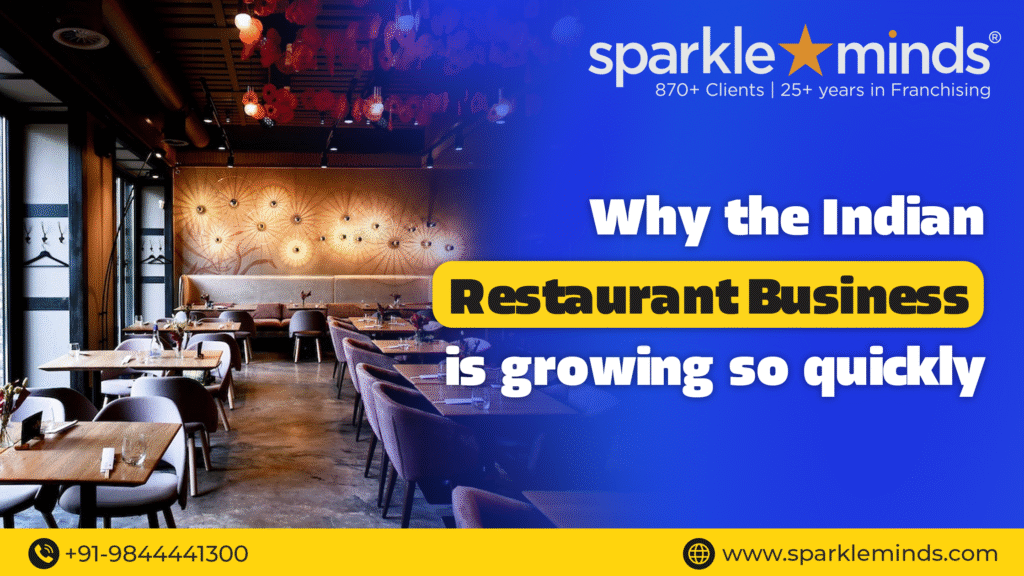Small, family-run bookshops serving local readers were considered as charming community hubs in India for decades. Strangely, yet, in recent years, national and regional retail brands have replaced mom-and-pop bookshop as the primary means of expanding their business. In spite of the growth of online shopping and electronic reading, bookshop giants such as Sapna Book House and Crossword have demonstrated that brick-and-mortar establishments can thrive through franchising, professionalisation, and scaling.
Today, more than ever before, there is an opportunity for bookshop owners. Creating experience-driven retail locations is becoming more important for bookshops in India as the middle class expands, disposable incomes rise, and there is a revived cultural focus on education, reading, and lifestyle spending.
Taking a page out of Crossword and Sapna Book House’s playbooks, this blog delves into how you, as a bookshop owner, can make your single outlet a recognised brand, all while taking advantage of new market trends, franchising models, and investor interest in India’s developing retail industry.

Why it’s a smart idea to expand your bookshop business in 2025
Once Again, Reading Is Popular
- Among millennials and Generation Z, reading is making a comeback as a popular pastime, particularly in major cities and secondary urban areas.
- Booksellers have become more of a social hub due to the proliferation of reading groups, author events, and Bookstagram communities.
We are seeing a boom in hybrid retail models.
- Nowadays, you may find more than just books at a bookshop; many now also have cafes, offices, toys, lifestyle items, and even coworking spaces.
- More customers and more money in the tills are the results of this “retail plus experience” strategy.
The Perspective on Education and Gifting
- Books for children’s learning, competitive tests, and academic resources will always be in demand in India’s education-driven economy.
- If you’re looking for high-quality stationery, games, and collectibles, a bookshop is a great place to find them.
How You Can Make Your Bookstore Business A National Brand Like Sapna Bookstore Or Crosswords – Lessons & Insights
The lifestyle-oriented bookshop brand known as Crossword
- In terms of positioning, Crossword positioned itself not only as a bookshop but also as a lifestyle destination, positioning itself frequently in malls that receive a lot of foot traffic.
- As part of their diversification strategy, Crossword franchises now also sell stationery, toys, games, and lifestyle products in addition to books.
- Franchise Model: Crossword has become one of the most well-known bookshop chains in India as a result of its successful expansion across the country through franchise partnerships.
The Scale-Driven Bookshop Brand: Sapna Book House
- Having its origins in the field of education, Sapna started out as an academic bookshop and eventually expanded to become one of the most successful book shops in Asia.
- In addition to books, multi-category retailing include other products such as stationery, office supplies, and educational aids, which results in the creation of several revenue streams.
- Digital Expansion: Sapna was an early adopter of e-commerce, which allowed the company to supplement its brick-and-mortar shopfronts with online sales.
One thing that business owners should take away from this is that both Sapna and Crossword were successful because they went beyond books, concentrated on the customer experience, and leveraged the scalability of franchises.
A Step-By-Step Guide To Franchising Your Bookstore Business Across India
The first step is to identify your unique positioning.
- Are you going to be more of a lifestyle-focused Crossword or an academic-driven Sapna?
- Would you be able to develop a specific focus, such as bookshops catering to children, literature in regional languages, or book cafés?
Build a Variety of Income Sources:
- To boost in-store spending, consider adding a cafe or shared office space.
- Present a selection of office supplies, games, puzzles, pencils, and also other lifestyle items.
- To increase participation, hold author events, seminars, and book clubs.
Consider a Franchise-Friendly Approach
- Establish a uniform store design and assortment of products.
- Ensure consistent client experience by creating franchise training materials.
- Assist partners with their supply chains and facilitate centralised procurement.
Maximise the Potential of Technology
- Introduce a reader loyalty program or app to your store.
- For hybrid offerings, team up with edtech companies or audiobook platforms.
- Keep tabs on demand for various categories with the help of inventory tools powered by AI.
Reach out to cities in Tier-2 and Tier-3
- Market your company to young people in the workforce. Also, in school by portraying it as an ideal place to live.
- Provide store formats that are ideal for smaller cities, with 1,500 to 2,000 square feet of space.
- Collaborate with nearby educational institutions to get bulk orders and more exposure.
Future Trends That Are Driving the Expansion of Bookshop Businesses
- Blending the tradition of reading with that of coffee, book cafés are popular in metropolitan areas and high-end shopping malls.
- Children’s play areas, gaming zones, and augmented reality and virtual reality storytelling sets are examples of experience-first retailing.
- The sustainability angle includes environmentally friendly stationery, products made from recycled paper, and branding with a green motif.
- The growing demand for books written in Marathi, Bengali, Tamil, and Hindi in tier-2 cities is the focus of this regional language spotlight.
- Complementing the tendencies of e-commerce, digital-physical hybrid models include the ability to place orders online and pick them up in-store.
The Opportunity for Franchise Growth
To expand a bookshop business in India, the franchising model is quickly becoming the most lucrative route to take. To explain why:
- Low initial Costs — When compared to franchises in the food and beverage industry or the fashion industry, bookshop franchises demand a considerably lower initial. Also, operational cost expenditure.
- Demand that is Consistent Books and stationery are in high demand throughout the entire year, particularly in markets that are dependent on education.
- Bookshops naturally become cultural hubs, which drives customer loyalty and word-of-mouth marketing. This is an example of community engagement.
- Scalability is the state of being able to replicate a standardised bookshop model across multiple places without sacrificing its distinctiveness.
The Investment Spectrum:
- The price range for small-format bookshops, which range from 800 to 1,200 square feet, is ₹20 to 30 lakhs.
- The price range for lifestyle bookshops that are above 2,000 square feet is between ₹50 lakhs and ₹1 crore.
- Timeline for Return on Investment for Franchises: 2.5–3.5 years, depending on the city and format.
Conclusion: Transform Your Bookshop Into a Powerhouse Brand
Indian bookshops are capitalising on a new economic and cultural upswing. Moreover, which is changing the face of retail in the country. The profitability of bookshop business expansion is not only feasible, but also highly profitable, as evidenced by the success of Sapna Book House and Crossword. This is particularly true when franchise scalability, hybrid merchandising, and strategic positioning are implemented.
The time has come for you, if you are the proprietor of a bookshop presently. You are able to develop a single outlet into a recognizable chain that connects with India’s aspirational consumers if you construct a powerful brand identity, diversify your services, and adopt a franchise model on your bookshop business.
Are you considering turning your bookshop into a famous brand on a national scale? We at Sparkleminds are experts in assisting proprietors of bookshops in the development of lucrative franchise models. Also, the establishment of connections with investors, and the attainment of seamless scaling across India.
Contact Sparkleminds today to collaborate on the next significant success story in the expansion of the Indian bookshop industry.
![]()









